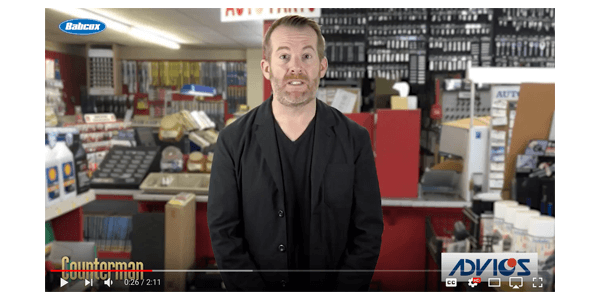So friction is friction right? Oh, that’s so wrong! Counter Intelligence is next!
Hi guys, it’s Mark Phillips. Not all friction is made alike. In most situations, friction is a bad thing, unless you want to stop a vehicle. That’s when friction and being able to apply enough of it, become VERY important. What is friction? Friction is the force resisting the relative motion of elements sliding against each other. In the case of cars and trucks, it is the brake pads pushing against a rotor that changes kinetic energy into heat. For a vehicle’s brakes to function, the rotors and pads have to wear. Even a brake rotor’s metallurgy can determine how a pad wears. There are two basic kinds of brake friction: Abrasive friction and adherent, also known as adhesive pad material. Abrasive friction is the wearing of the pad and rotor to change forward motion into heat. Both components wear. Semi-met pads and some non-asbestos organics use this type of friction. With adherent or adhesive pad material, a very thin layer of pad material is transferred onto the surface of the rotor. Ceramic and some non-asbestos organic pads use this type of friction. The transfer layer is bonded to the rotor’s surface and cannot be washed away by water or wheel cleaners. The only way to remove it is by removing it with a brake lathe or abnormal heat.
With both types of friction, it’s essential for the rotor to have minimal runout. Abrasive friction materials will wear away at high spots, creating disc thickness variation and pulsation. Adhesive or adherent friction material could deposit the friction material unevenly and cause brake judder. A word about materials: A brake pad may require up to 20 different raw materials. Some raw components of a friction material are abrasive, while other components lubricate. Some components, like structural fibers and resins, hold the pad together, while other components tune the friction levels through various temperature ranges. So, there’s a lot going on in there to make sure a vehicle can come to a complete stop — and in time! I’m Mark Phillips. And thanks for watching.






